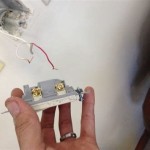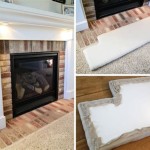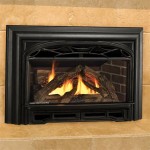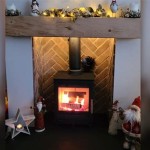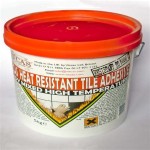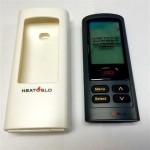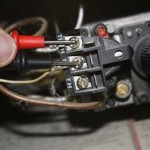Fireplace Insert Electrical Connection: A Comprehensive Guide
Fireplace inserts, converting inefficient open fireplaces into effective heating sources, frequently require electrical connections for various functions. These functions may include operating blowers, powering electronic ignition systems, controlling remote controls, and displaying decorative lighting effects. Understanding the electrical requirements and proper connection procedures is crucial for safe and efficient operation of the fireplace insert. This article provides a comprehensive guide to fireplace insert electrical connections, outlining key considerations and best practices.
The complexity of the electrical connection depends heavily on the specific model and features of the fireplace insert. Some basic models may only require a standard 120V outlet connection to power a blower, while more advanced units could demand dedicated circuits, sophisticated wiring, and grounding considerations. Careful attention to the manufacturer’s instructions is paramount before initiating any electrical work.
Understanding Electrical Requirements
Before commencing any electrical connection work, a thorough review of the fireplace insert's electrical specifications is necessary. This information is typically found in the product manual or on a label affixed to the appliance itself. The electrical specifications will detail the voltage, amperage, and wattage requirements of the unit. Failure to adhere to these specifications can lead to equipment malfunction, fire hazards, and voided warranties.
Voltage: Most residential fireplace inserts operate on standard 120V AC power. However, certain models, particularly those with higher BTU output or specialized features, might require 240V AC power. Identifying the correct voltage is critical to avoid damaging the insert or the electrical system.
Amperage: The amperage rating indicates the amount of electrical current the fireplace insert draws during operation. This value is essential for determining the appropriate circuit breaker size and wire gauge needed for the electrical connection. Using an undersized circuit breaker can lead to frequent tripping, while using insufficient wire gauge can result in overheating and potentially cause a fire.
Wattage: Wattage represents the total electrical power consumed by the fireplace insert. It can be calculated by multiplying voltage and amperage (Watts = Volts x Amps). This information helps in assessing the overall electrical load on the circuit and ensuring that the electrical system can safely accommodate the additional demand.
GFCI Protection: Ground Fault Circuit Interrupter (GFCI) protection is often required, especially in locations prone to moisture, such as near water sources or in damp basements. GFCI outlets or circuit breakers interrupt the electrical circuit when a ground fault is detected, preventing electrical shock. Consult local electrical codes and the manufacturer's instructions to determine if GFCI protection is necessary for the fireplace insert's electrical connection.
Dedicated Circuit: A dedicated circuit is a circuit that serves only the fireplace insert and no other appliances or devices. This is often recommended, especially for inserts with higher power demands, to prevent overloading the circuit and ensure reliable operation. A dedicated circuit provides a stable and consistent power supply, reducing the risk of voltage fluctuations and potential damage to the insert.
Safe Electrical Connection Procedures
Safety must be the top priority when working with electricity. Unless an individual possesses the necessary electrical expertise and qualifications, it is strongly recommended to hire a licensed electrician to perform the electrical connection. Professional electricians have the training, tools, and knowledge to ensure a safe and code-compliant installation.
Disconnect Power: Before initiating any electrical work, always disconnect the power supply to the circuit at the main electrical panel. This can be accomplished by switching off the appropriate circuit breaker or removing the fuse. Verify that the power is off by using a non-contact voltage tester to confirm that no electricity is flowing through the wires.
Wiring Requirements: The wiring used for the fireplace insert's electrical connection must be of the appropriate gauge and type for the voltage and amperage requirements. Consult the manufacturer's instructions and local electrical codes to determine the correct wiring specifications. Generally, non-metallic (NM) cable, also known as Romex, is commonly used for residential wiring. The cable should be properly secured and protected from physical damage.
Grounding: Proper grounding is essential for electrical safety. The grounding wire, typically green or bare copper, provides a low-resistance path for fault current to flow back to the electrical panel, tripping the circuit breaker and preventing electrical shock. Ensure that the fireplace insert is properly grounded according to the manufacturer's instructions and local electrical codes. Connect the grounding wire to a designated grounding terminal or screw inside the insert's junction box.
Junction Box: A junction box is a metal or plastic enclosure used to protect electrical connections and provide a safe location for wiring splices. The fireplace insert should have a designated junction box for making the electrical connections. All wire connections must be made inside the junction box and secured with appropriate wire connectors, such as wire nuts or crimp connectors. The junction box cover must be securely fastened to prevent accidental contact with live wires.
Following Manufacturer's Instructions: The manufacturer's instructions are the definitive guide for the electrical connection. They provide specific details on wiring diagrams, grounding procedures, and any unique requirements for the particular fireplace insert model. Adhering to these instructions ensures a safe and correct installation and can prevent potential problems down the line.
Troubleshooting Common Electrical Issues
Even with careful installation, electrical issues can occasionally arise with fireplace inserts. Understanding common problems and troubleshooting techniques can help in diagnosing and resolving these issues.
Circuit Breaker Tripping: Frequent tripping of the circuit breaker is a common problem that can indicate an overload or a short circuit. Check the amperage rating of the fireplace insert and ensure that it does not exceed the capacity of the circuit breaker. Inspect the wiring for any signs of damage or loose connections. If the problem persists, it may be necessary to upgrade the circuit breaker or the wiring.
Blower Malfunction: If the blower is not working properly, check the power supply to the fireplace insert. Verify that the circuit breaker is not tripped and that the outlet is providing power. Inspect the blower motor for any signs of damage or obstructions. The blower motor may need to be replaced if it is defective.
Ignition Problems: If the fireplace insert has an electronic ignition system, problems with the ignition can prevent the unit from starting. Check the power supply to the ignition module and ensure that the spark electrode is clean and properly positioned. The ignition module or spark electrode may need to be replaced if they are defective.
Remote Control Issues: Remote control problems can be caused by dead batteries, interference from other electronic devices, or a malfunctioning receiver. Replace the batteries in the remote control and try moving closer to the fireplace insert. Ensure that there are no obstructions between the remote control and the receiver. The receiver may need to be replaced if it is defective.
Dim Lighting or Flickering: If the fireplace insert has decorative lighting, dim lighting or flickering can indicate a problem with the light bulbs or the wiring. Check the light bulbs and replace them if necessary. Inspect the wiring for any signs of damage or loose connections. The lighting fixture may need to be replaced if it is defective.
When troubleshooting electrical issues, always disconnect the power supply to the circuit before performing any work. If unable to confidently diagnose and resolve the problem, it is advisable to consult with a qualified electrician. Attempting to repair electrical issues without the necessary expertise can be dangerous and may void the warranty.
In summary, the electrical connection of a fireplace insert requires careful planning, execution, and adherence to safety protocols. Understanding the electrical requirements, following proper connection procedures, and troubleshooting common issues are crucial for ensuring safe and efficient operation. When in doubt, always consult with a licensed electrician to ensure a safe and code-compliant installation.

ᑕ❶ᑐ How To Install An Electric Fireplace Insert Magikflame Blog
How To Install An Electric Fireplace Insert

How To Install An Electric Fireplace Insert In Existing

4 Things Needed For An Electric Fireplace And Not

Fireplace Insert Guide Fireplaces Direct Learning Center

Custom Installation Of Fireplace Inserts Insert Installations Sierra Hearth And Home

How To Install An Electric Fireplace Insert In Existing

How To Install A Napoleon Built In Electric Fireplace Fireplaces Direct Learning Center

Fireplace Inserts Everything You Need To Know Full Service Chimney

Recessed Or Wall Mount Electric Fireplace Installations Explained Touchstone Home S Inc
Related Posts

